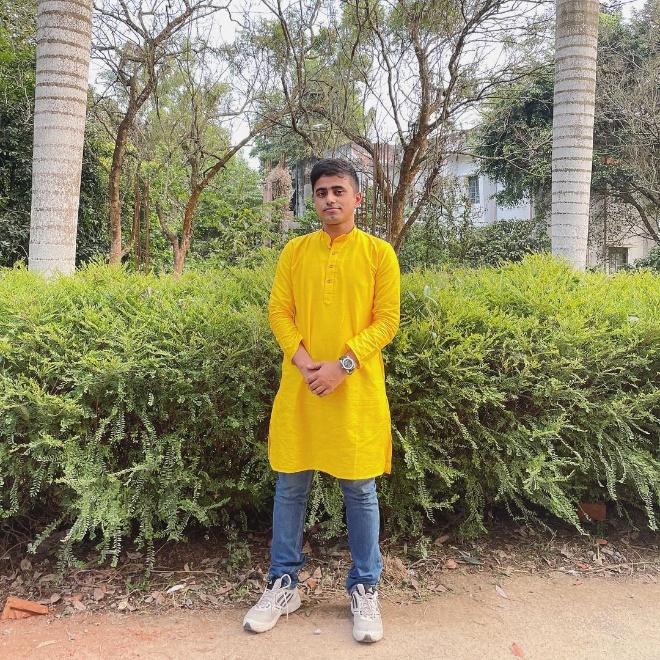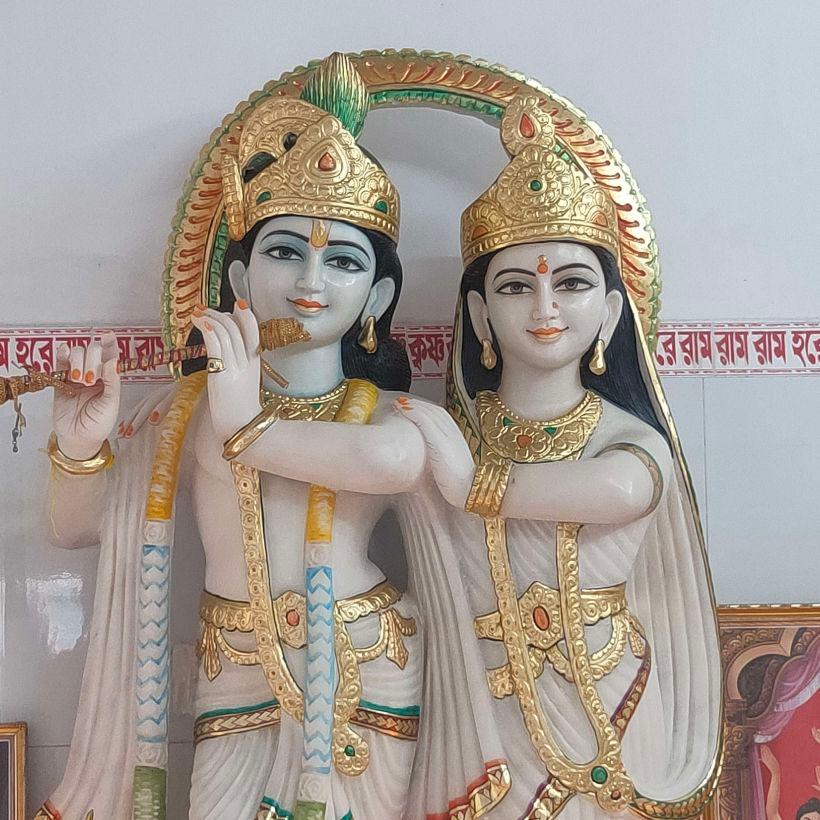Exploring the Sacred Heritage:Gomateshwara Temple
Table of contents
History of Gomateshwara Temple
Significance of Gomateshwara Temple
Speciality of Gomateshwara Temple
Why must one visit the Gomateshwara temple?
Location of the temple
Darshan Timings of the temple/ Tips before visiting the temple
Special festivals celebrated at Gomateshwara Temple
How to reach the Temple
Gomateshwara Temple

The roots of the Gomateshwara temple can be traced back to the 10th century when it was built by the Ganga dynasty. One of the most respected figures in Jainism, Lord Bahubali, often referred to as Gomateshwara, is the recipient of the temple’s dedication. Rishabhanatha, the first Jain Tirthankar, was the proud father of Lord Bahubali, who was his son.
History of Gomateshwara Temple
The Gomateshwara Temple was built in the 10th century CE by Chamundaraya, who was a poet and minister from the Western Ganga Dynasty.
The base of the statue has an inscription that lauds the great work done by the King who sanctioned the funds to build the statue and the efforts of his minister, Chavundaraya, who played a key role in getting the statue erected. The statue built by the king for his mother is a monolith structure, which means it has been built from a single rock. . The 18 m (60 feet) tall monolith statue, built out of granite, gives an idea about its size. The statue is so huge that it can easily be seen even from a distance of 30 km.
Significance of Gomateshwara Temple
The magnificent statue, erected in 983 A.D., portrays Bahubali in a serene state of deep meditation, depicted through the kayotsarga pose. Climbing vines near his legs symbolise the growth that arises from this meditative state. Meticulously sculpted, the statue exhibits broad shoulders and straight arms, while the absence of backing from the thighs upwards adds to its awe-inspiring presence. Intricate details grace his curly hair, large ears, and half-open eyes gazing inward, reflecting detachment from worldly affairs. A subtle smile adorns his lips, signifying inner peace and vitality. The Gomateshwara status and the temple complex bear witness to the rich history of the region. The inscriptions found in and around the temple provide valuable insights into the political and cultural developments of the time. The site has been declared a protected monument by the Archaeological Survey of India.
Speciality of Gomateshwara Temple
1. The temple is a major pilgrimage centre for Jains. The statue of Lord Bahubali (Gomateshwara) is considered one of the most sacred sites in Jainism. Every 12 years, the grand Mahamastakabhisheka festival is held, during which the statue is anointed with various offerings such as milk, saffron, and gold coins. This event attracts thousands of devotees and tourists from around the world.
2. The serene and meditative posture of the statue symbolises peace, non-violence, and renunciation, core principles of Jain philosophy.
3. The temple contains numerous inscriptions in Kannada, Tamil, and Sanskrit, providing valuable insights into the region's history, language, and culture during that period.
4. The temple and its statue are considered cultural treasures of India. They reflect the rich tradition of Jain art and architecture and contribute to the diverse cultural heritage of Karnataka.
5. Besides its religious importance, the temple attracts a large number of tourists, contributing to the local economy and promoting cultural tourism in the region.
6. The Gomateshwara Temple at Shravanabelagola is not only a place of worship but also a testament to the artistic, religious, and cultural heritage of ancient India.
Why must one visit Gomateshwara Temple
Visiting the Gomateshwara Temple in Shravanabelagola offers a unique and enriching experience for several reasons:
1. Visitors can learn about Jain philosophy, including principles of non-violence, renunciation, and spiritual liberation, and observe the devout practices and rituals of Jain devotees.
2. Every 12 years, the grand Mahamastakabhisheka festival takes place, involving the anointing of the statue with various offerings. This event is a rare and spectacular sight, drawing thousands of devotees and tourists.
3. The temple complex is rich in historical inscriptions in Kannada, Tamil, and Sanskrit, offering a glimpse into the history, language, and culture of the region. These inscriptions are valuable for understanding the socio-political and religious context of ancient South India.
4. The temple is located atop a hill, providing panoramic views of the surrounding landscape. The climb to the statue involves ascending a series of steps, which can be a fulfilling physical activity coupled with the opportunity to appreciate the natural beauty of the area.
5. Visiting the temple provides an educational experience, where one can learn about the Jain religion, ancient Indian art and architecture, and the historical significance of the region. It's a great opportunity for cultural immersion and historical learning.
6. The serene environment of the temple and the meditative presence of the statue offer a peaceful setting for introspection and spiritual reflection. The calm and tranquil atmosphere is ideal for those seeking a break from the hustle and bustle of daily life.
Location of the Temple
The Gommateshwara statue is a 57-foot (17 m) high monolithic statue on Vindhyagiri Hill in the town of Shravanabelagola in the Indian state of Karnataka.
Best time to visit
October to April is the best time to visit Shravanabelagola. These are the cooler months and it becomes easier for visitors to visit the temples as it will require them to be out in the sun a lot more.
Tips before visiting the Temple
-Arrive early in the morning to avoid the crowds and heat.
- Footwear is not allowed inside the temple complex. Be prepared to walk barefoot. Bring a bag to carry your shoes.
- Wear modest clothing that covers your shoulders and knees. Loose, comfortable attire is recommended.
- Maintain silence and respect the sanctity of the temple. Photography might be restricted in certain areas, so check for signs or ask before taking pictures.
Festivals celebrated in Gomateshwara Temple
1. Mahamastakabhisheka: This is the most prominent festival, celebrated once every 12 years. The festival involves the grand anointment of the 57-foot-tall statue of Lord Bahubali (Gomateshwara) with various sacred substances like milk, curd, ghee, saffron, and gold coins.
2.Annual Rath Yatra: This is an annual chariot procession where the idols of the temple deities are taken out in a grand procession. Devotees pull the chariot, and the event includes various religious rituals and celebrations.
3. Kartik Purnima: Celebrated on the full moon day of the Kartik month (usually November), this festival includes special prayers, rituals, and lighting of lamps. Pilgrims visit the temple to seek blessings and participate in the festive activities.
4. Diwali: The Jain community celebrates Diwali to mark the attainment of Moksha (liberation) by Lord Mahavira. Special prayers and rituals are conducted at the temple, and the festival of lights is celebrated with devotion.
5. Paryushana: An important Jain festival lasting 8-10 days, focused on fasting, self-discipline, and reflection. The temple hosts special prayer sessions, discourses, and rituals during this period.
6. Mahavir Jayanti: Celebrated to mark the birth anniversary of Lord Mahavira, the 24th Tirthankara of Jainism. The temple organises special prayers, processions, and community feasts.
How to reach the Temple
By Road: Shravanabelagola is well-connected by road. It is accessible via National Highway NH 75, and regular buses and taxis are available from major cities like Bangalore and Mysore.
By Train: The nearest railway stations are Hassan (about 50 kilometres away) and Channarayapatna (about 12 kilometres away). From these stations, local transport options are available to reach the temple.
By Air: The nearest major airport is Kempegowda International Airport in Bangalore. From the airport, visitors can take a taxi or bus to Shravanabelagola.
















